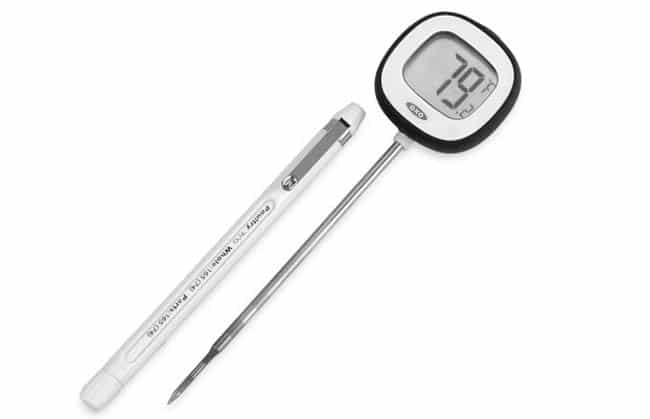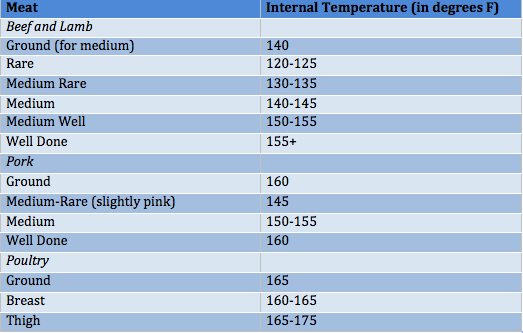Domestic Details: Meat and Poultry Internal Temperature Guide
This post may contain affiliate links. Read about my affiliate policy.

The truth is, there are several ways to determine doneness with each type of meat. For example, the juices of your roast chicken should run clear when it’s fully cooked, and a medium rare steak should feel like the flesh below your thumb when you gently press your middle finger to the tip of your thumb. If reading that last sentence made you feel confused/panicky/angry, relax. There is a very simple solution that does not involve analyzing juices or getting handsy with a piece of beef. All you have to do is one simple thing…
BUY A MEAT THERMOMETER.
An instant-read meat thermometer can be found in most supermarkets for less than 20 dollars, and it will make your domestic pursuits infinitely less stressful. Just insert the tip into the hot piece in question (innuendo!), and the reading on your thermometer will magically indicate whether or not your meat is good to go. For your convenience, I have compiled a list of the ideal internal temperatures for beef, lamb, pork, and poultry below.
Just a few things to keep in mind when using your fancy meat thermometer:
1. Meat should always rest for at least 10 minutes after being removed from the heat source to allow the juices to redistribute. The internal temperature of the meat will continue to rise 5-10 degrees during the resting process, so keep that in mind when determining the doneness of your meat. (Example: If you are roasting a turkey and you want it to be 165 degrees F, remove it from the oven when the thermometer reads 150-155 degrees F.)
2. Try to poke the meat with the thermometer as few times as possible. You want to keep the meat as juicy as you can, and poking holes allows precious juice to escape. Plus, holey meat is unattractive. Duh.
3. Make sure that when you insert your thermometer into the meat it doesn’t touch any bone. Bone conducts heat faster than meat, giving you a distorted reading.
Domesticity is all in the details, friends. Bow to your sensei.
*If you have a burning question that you’d like featured on a future edition of Domestic Details, don’t hesitate to contact me or leave it in the comments. Help me help you.
Shop this post
Never miss a post!
Get new recipes and lifestyle tips delivered straight to your inbox.

